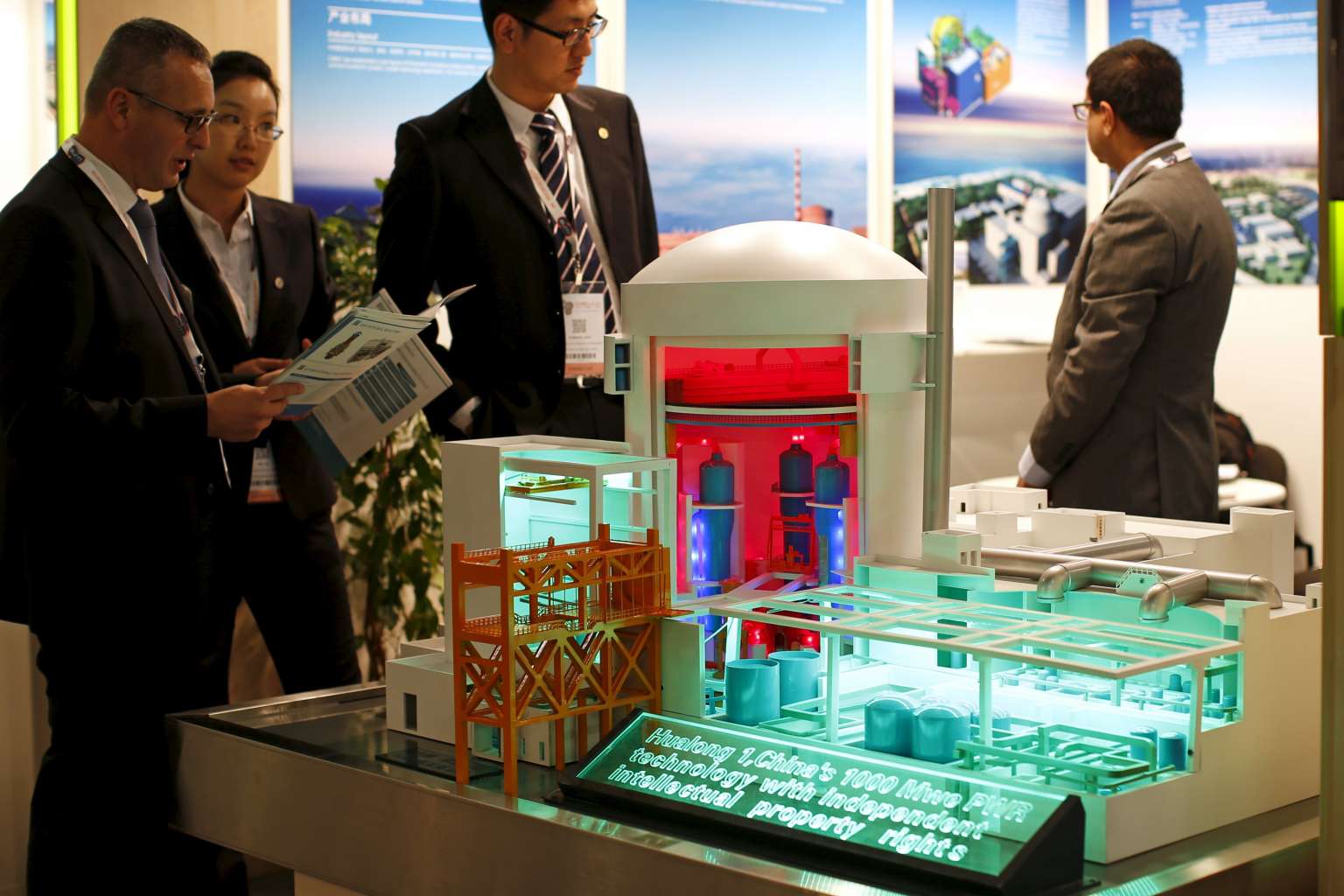Editorial Notes
China's nuclear technology ambition is worrying: The Yomiuri Shimbun
Sign up now: Get insights on Asia's fast-moving developments

A nuclear power plant station model by China National Nuclear Corporation at the World Nuclear Exhibition 2014.
PHOTO: REUTERS
Follow topic:
In its editorial on Dec 15, 2015, The Yomiuri Shimbun hopes China will follow up on its nuclear ambitions with suitable regulatory measures.
We cannot afford to be unconcerned about China's moves to accelerate construction of nuclear power plants.
Is the safety of these facilities ensured?
According to the World Nuclear Association, 30 nuclear reactors are currently operating in China.
Japan has 43, but as the restart of the nation's idled reactors is lagging, China is effectively fourth on the list of nations with the most nuclear power plants - behind the United States, France and Russia.
The administration of Chinese President Xi Jinping is planning to further increase the number of nuclear power plants to cope with the nation's serious air pollution, which stems from coal-fired power generation, and increasing energy demand.
According to local media reports, Beijing will build six to eight nuclear reactors annually in the next five years. By 2030, the number is set to reach 110, surpassing the 99 in the United States.
One major concern is that information about nuclear power plants in China is extremely limited.
China's nuclear power operations began in 1994, and the number of nuclear reactors has increased rapidly since then.
However, the details of regulatory standards are not disclosed - it is quite obscure what kind of safety measures China is currently taking.
There are limited examples of the Chinese government officially disclosing troubles with the nation's nuclear power plants to the public, such as leaks of radioactive material or mechanical problems caused by accidents.
The less information available, the more concern there is. The Japanese government must reinforce its measures to collect information on China's nuclear power plants.
Prevailing westerlies bring yellow sand and air pollutants to Japan from China. If serious nuclear accidents occur in China, there could be serious repercussions for Japan.
It cannot be overlooked the fact that China's nuclear power plants are concentrated in coastal areas.
After the nuclear accident at Tokyo Electric Power Co.'s Fukushima No. 1 nuclear power plant, Beijing has put restrictions on the construction of nuclear power plants in inland areas. We assume Beijing is wary of the domestic impact from accidents if they occur inland.
China's nuclear reactors rarely use technologies developed in the country - they are basically an amalgamation of technologies imported from European countries, the United States and Japan.
Japan provides core parts, such as reactor pressure vessels.
In recent years, China's export drive on nuclear power plants has received worldwide attention.
During his visit to Britain in October, Mr Xi agreed with British Prime Minister David Cameron to build a Chinese Hualong One reactor, which is an improved version of a French reactor, in Britain.
Britain was once an advanced nuclear nation, but its technology declined after the nation stopped building new reactors.
Under the current circumstances, it was unavoidable for Britain to rely on the technology of China, a nation that is rapidly gaining experience by building new reactors and has the advantage of cheap construction costs.
Beijing is also constructing Hualong One reactors in Pakistan, and is seeking to launch a promotion drive in South American and African countries.
However, we must point out that Hualong One is a model still under construction even in China itself. It is problematic that a model without sufficient operation records has begun sweeping the whole world.
For Japan, the export of nuclear power technologies is a pillar of the nation's infrastructure export drive. It is crucial to further polish the nation's technological capability and produce tangible results.
We also urge the government to start discussions about constructing new reactors in Japan.
----------------------
The Yomiuri Shimbun is a member of The Straits Times media partner Asia News Network, a grouping of 22 newspapers seeking to promote coverage of Asian affairs.
The Yomiuri Shimbun is a member of The Straits Times media partner Asia News Network, a grouping of 22 newspapers seeking to promote coverage of Asian affairs.

